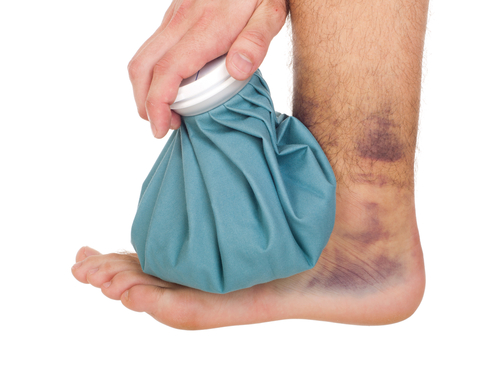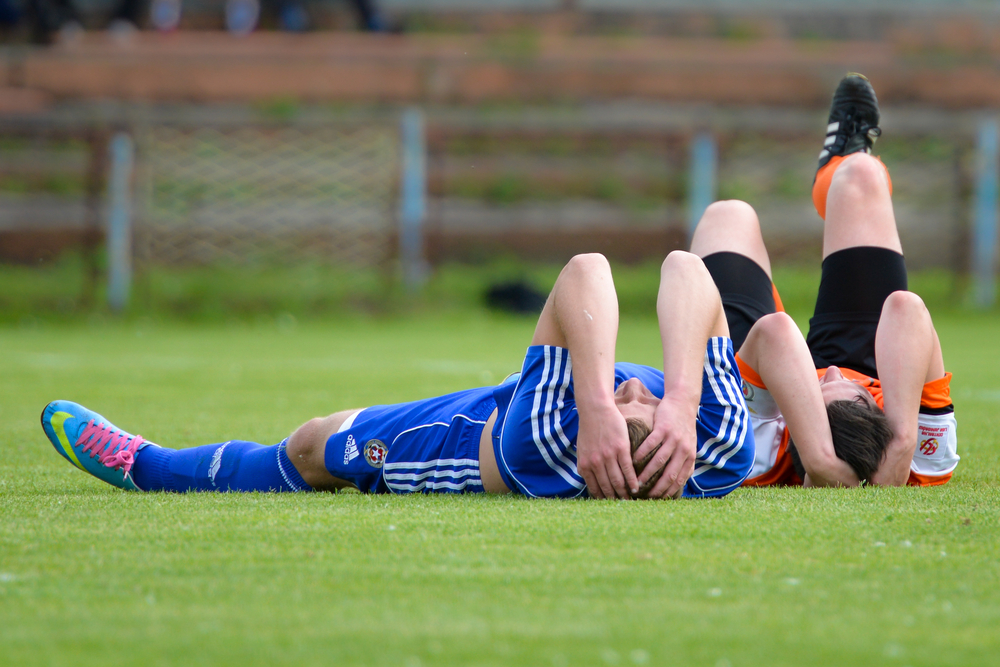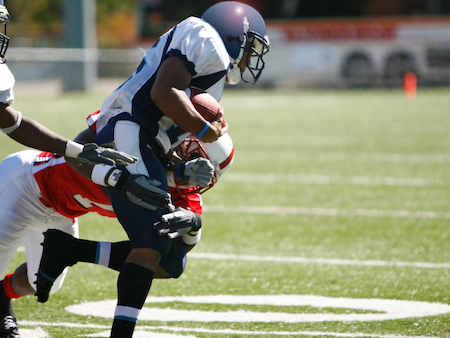Recognize Sports Concussion Symptoms
By Dan Peterson, TeamSnap's Sports Science Expert
A concussion, clinically known as a Mild Traumatic Brain Injury (MTBI), is one of the most common yet least understood sports injuries. According to the Centers for Disease Control (CDC), there are as many as 300,000 sports and recreation-related concussions each year in the U.S., yet the diagnosis, immediate treatment and long-term effects are still a mystery to most coaches, parents and even some clinicians. To help simplify a confusing topic, the CDC has defined four major categories of symptoms that every mom, dad, team manager and coach should memorize.
Concussions can be deceiving as there are rarely any obvious signs of trauma. If the head is not bleeding and the player either does not lose consciousness or regains it after a brief lapse, the potential damage is hidden and the usual "tough guy" mentality is to "shake it off" and get back in the game.
So, what exactly is it? The CDC defines a concussion as "a complex pathophysiologic process affecting the brain, induced by traumatic biomechanical forces secondary to direct or indirect forces to the head." Being a "mild" form of traumatic brain injury, it is generally believed that there is no actual structural damage to the brain from a concussion, but more a disruption in the biochemistry and electrical processes between neurons.
The brain is surrounded by cerebrospinal fluid, which is supposed to provide some protection from minor blows to the head. However, a harder hit can cause rotational forces that affect a wide area of the brain, but most importantly the mid-brain and the reticular activating system which may explain the loss of consciousness in some cases.
For some athletes, the concussion symptoms take longer to disappear in what is known as post-concussion syndrome. It is not known whether this is from some hidden structural damage or more permanent disruption to neuronal activity. Repeated concussions over time can lead to a condition known as dementia pugilistica, with long-term impairments to speech, memory and mental processing. After the initial concussion, returning to sports before symptoms clear raises the risk of second impact syndrome, which can cause more serious, long-term effects.
To be sure that injured kids are not put back in a game, coaches and parents need to know what to look for after a collision involving the head. Some symptoms may be apparent immediately, others may take time to appear.
When a young athlete has a head collision of any type, including with other heads, objects, or even other body parts (elbows, knees, shoulders), here are two lists to immediately evaluate the situation:
SIGNS OBSERVED BY COACHING STAFF
- Appears dazed or stunned
- Is confused about assignment or position
- Forgets an instruction
- Is unsure of game, score, or opponent
- Moves clumsily
- Answers questions slowly
- Loses consciousness (even briefly)
- Shows mood, behavior, or personality change
- Can’t recall events prior to hit or fall
- Can’t recall events after hit or fall
SYMPTOMS REPORTED BY ATHLETE
- Headache or “pressure” in head
- Nausea or vomiting
- Balance problems or dizziness
- Double or blurry vision
- Sensitivity to light
- Sensitivity to noise
- Feeling sluggish, hazy, foggy, or groggy
- Concentration or memory problems
- Confusion
- Just “not feeling right” or “feeling down”
If any of these signs or symptoms are present, follow these steps:
- Remove athlete from play.
- Ensure athlete is evaluated by an appropriate health care professional. Do not try to judge the seriousness of the injury yourself.
- Inform athlete's parents or guardians about the known or possible concussion and give them the fact sheet on concussion.
- Allow athlete to return to play only with permission from an appropriate health care professional.
To get these reminders in a handy, one-page summary for your coach’s clipboard, visit http://www.cdc.gov/concussion/pdf/clipboard_Eng.pdf
Even if the player doesn’t show any of these signs or symptoms right away, parents need to know the four categories of concussion symptoms and watch for the next STEP:
SLEEP DISTURBANCE
- Sleeping more than usual
- Sleeping less than usual
- Trouble falling sleep
THINKING/REMEMBERING
- Difficulty thinking clearly
- Feeling slowed down
- Difficulty concentrating
- Difficulty remembering new information
EMOTIONAL/MOOD
- Irritability
- Sadness
- More emotional
- Nervousness/Anxiety
PHYSICAL
- Headache
- Vomiting/Nausea
- Balance problems
- Dizziness
- Fuzzy or blurry vision
- Feeling tired
- Sensitivity to light or noise
If any of these symptoms show up, have your son or daughter examined by your family physician. They will decide when your athlete is ready to return to their sport.
For more information on concussions, please visit: www.cdc.gov/Concussion.
Header Photo by Rosli Othman / Shutterstock.com
NEW! Free Sports Organization Resources
All of TeamSnap's ebooks, articles, and stories in one place. Access Now
Similar Articles:

Research Questions the Practice of Icing a Minor Injury
By Dan Peterson, TeamSnap's Sports Science Expert …
Read More

Player To Player Contact, Not Headers, Cause Most Soccer Concussions
By Dan Peterson, TeamSnap's Sports Science Expert …
Read More

Concussion Rate Doubles - And That’s A Good Thing
By Dan Peterson, TeamSnap's Sports Science Expert. Last…
Read More
